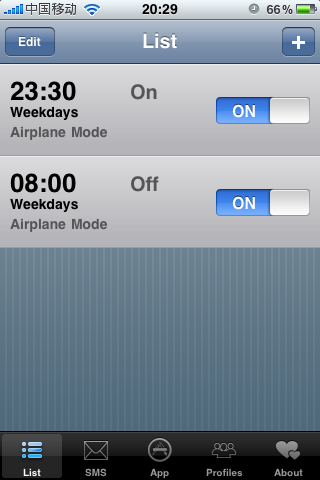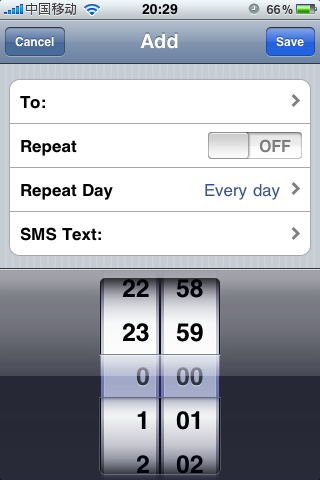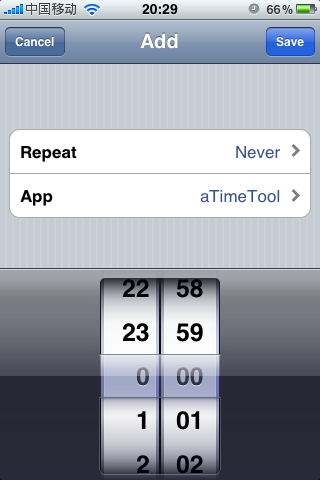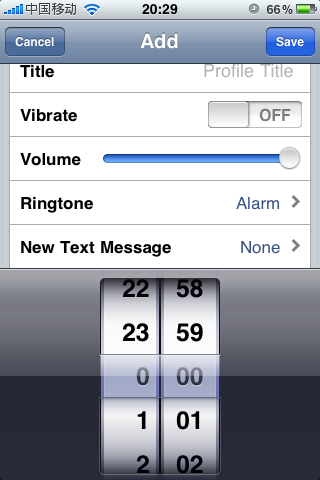, I've had a serious GPS jones for quite a while. When I was in much better shape, I rode the local trails on a mountain bike with a Garmin eTrex Summit. It didn't have any maps, nor did I really need any for what I was doing. My next GPS receiver was a Garmin GPSmap 60cs that I used for geocaching. It had a nice color screen and some limited maps, but really didn't do a very good job of helping me find my way around town.
, and in this case it was my first real "navigator." I still have it; it's the Garmin nüvi 660, which is an awesome little unit that can help you find your way around the US or Europe (depending on the model you purchase), act as an MP3 player, or even work as a fairly serviceable hands-free unit for Bluetooth phones.
It's best capability, of course, is as a navigator. In this post, I'm going to compare the
[App Store] and service with the nüvi, and give you my take on how this free app works. Mel already filled you in on some of the details in his earlier post; we agreed that I'd give you the road test perspective.
I received a test account from AT&T last week while I was in Houston, TX teaching a class. Since I don't know my way around Houston and I had a rental car, it was the perfect opportunity to give the app a try. Of course, I tend to be a bit wary of software that I've never used before, so I decided to bring my nüvi with me just in case things didn't work as planned.
Like any automobile GPS receiver, the AT&T Navigator app has you accept a disclaimer before you can actually use it. This disclaimer comes up every time you start the app; my nüvi does the same annoying thing every time I power it up. Once you've accepted the disclaimer, you're presented with a very simple user interface.
There are four primary buttons to push; Drive To, Search, Maps & Traffic, and Tools & Extras. Tapping Drive To gives you six more buttons -- My Favorites, where you can access places you've tagged as favorites (like home!); Recent Places, which lists recent addresses that you've entered into the unit; Address, which allows you to enter a street address; Business, which provides a search of businesses near your current location; Airport, which provides the nearest airports; and Intersection, where you can enter two street names in a city to get directions to an intersection.
I agree wholeheartedly with Mel's disappointment that you can't pull addresses from your Contacts. That is an issue that should be rectified immediately. However, even if you synchronize your contacts with an "old" Garmin nüvi like mine you can't scroll through a list of friends or business associates and pull up their address. If AT&T and Telenav can add that feature, it will be one more nail in the coffin of single-tasker GPS navigators for cars.
Entering addresses into the unit is amazingly simple. I found it easier to use than the Garmin, since a list of nearby cities shows up as soon as you type the first letter of the city name. The Garmin will often wait until the full city name or at least three or four letters are typed in to come up with a short list of cities. In addition, the Garmin requires you to enter the street number first, then the street name -- AT&T Navigator lets you type in the full address or, even better, paste it in. While visiting Houston, fellow TUAW blogger
Aron Trimble and his wife invited me to join them for dinner at a barbecue restaurant. I had the address in an email from Aron, so using iPhone OS 3.0's copy and paste feature, I copied the street address and pasted it right into the street address slot.
For local businesses, things are even easier. Just tap on the Search button, pick from a category, and the closest businesses of that category are instantly listed. Tapping on a listing gives you a Drive To button that provides turn-by-turn direction, and there is a phone number you can dial with one tap. Any of the businesses can be added to your favorites list with one tap as well. You can even rate the businesses or view the list by the most popular.
For my road test, I had a nice Ford Mustang that I was able to get at a subcompact rate. I had the Garmin unit mounted on the windshield, while the iPhone 3GS was plugged into the console power outlet. Here's where things got interesting -- the iPhone was always able to get my current location faster than the Garmin. There's a reason for that. The iPhone 3G and 3GS both use A-GPS (assisted GPS), which uses triangulation from known locations of nearby cell towers to get a fast fix on your approximate location.
In one test, I was leaving a covered parking garage. The iPhone had my location within ten seconds of leaving the garage, while I waited almost three minutes for the Garmin to come to its senses. Chalk one up for the iPhone!
[Other dashboard GPS vendors like TomTom allow users to download weekly
ephemerides 'fast fix' updates, which improve the acquisition performance of their units and allow for a position lock within a few seconds. –Ed.]
Both the Garmin and the AT&T Navigator were equally talky when giving directions. In fact, they usually decided to speak up at the same time, and were usually saying almost the same thing. The AT&T Navigator did have one phrase that was unique to it; "Checking route for traffic." I was hoping that the phrase meant that the app was going to automatically route me around traffic jams. That obviously didn't happen, as I found myself stuck in some of Houston's infamous traffic jams.
The app receives up-to-the-minute traffic updates, and tapping on the Summary screen when you're in the Map mode displays a button for a Traffic Summary. The traffic summary shows where highways are showing slowdowns and will let you choose to find a new route around jams. If you tap on the "Minimize All Delays" button or preset the Route Type preference to "Traffic Optimized," AT&T Navigator attempts to find a faster route. I wish I had known that when I was cruising at a whopping 2 MPH on I-610!
In tests in Houston and Denver, I found that AT&T Navigator and the Garmin nüvi gave identical directions. Both had issues with the Texas on-ramps, which are more like a set of 65 mph frontage roads on either side of the freeways. I found that I actually preferred the onscreen display on the iPhone, since it shows a large yellow arrow showing which way to turn.
The big concern with the AT&T Navigator app, which Mel also mentioned, is that the iPhone's speaker simply isn't loud enough to be clearly heard and understood while driving in most cars. The upcoming
TomTom turn-by-turn navigation app will come with hardware in the form of a windshield-mounted dock that will charge your iPhone, provide "enhanced GPS performance" and "clear voice instructions." I'm hoping that means that it has an amplified speaker in it so that you can actually hear the iPhone.
What I ended up doing was using the
Belkin Mini-Stereo Cable for iPhone that I always carry with me to plug the iPhone into the car's MP3 input jack. This provided a way to get a loud, booming surround-sound voice giving me directions. Unfortunately, it makes it impossible for me to listen to my favorite local radio stations at the same time.
Mel also brought up the point that the app, which costs $9.99/month, might be more expensive than just buying a dedicated GPS navigator. True, but if you want traffic information for a GPS navigator, you're going to need to purchase a monthly subscription anyway. For Garmin units, this runs anywhere from $50 annually (Navteq) to $9.95 per month (XM Traffic). With my Garmin nüvi, I buy map updates on an annual basis that cost about $60.
On several occasions, the app seemed to get confused about where I was and it would suddenly start telling me to make a u-turn or do something else drastic. I chalk this up to having the unit sitting on the car console rather than on the windshield. When someone comes up with a combo speaker/windshield mount for the iPhone, I'd like to give it a try to see if the app maintains accuracy all the time.
In conclusion, I found the AT&T Navigator app to be accurate, fast, helpful, and full-powered. If you don't currently own a car GPS unit and you do own an iPhone 3G or 3GS, you might want to consider signing up for the service and installing the free app on your device. If you can hold out for the TomTom unit, it might be a more worthy successor to standalone car navigators. Whatever I end up using in the future, it's going to be nice to carry one less device with me on road trips.






 Munster noted that having multiple carriers in a market has helped Apple to achieve greater success in terms of market penetration. He pointed to France as an example; originally, Apple inked an exclusive arrangement with Orange. When it moved to a multi-carrier deal, Apple's market share in France jumped to about the 40 percent range. In the U.S., the iPhone's market share is only in the mid-teens.
Munster noted that having multiple carriers in a market has helped Apple to achieve greater success in terms of market penetration. He pointed to France as an example; originally, Apple inked an exclusive arrangement with Orange. When it moved to a multi-carrier deal, Apple's market share in France jumped to about the 40 percent range. In the U.S., the iPhone's market share is only in the mid-teens. Last night I received an email from a friend who was irate. He's been using his iPod touch as a portable video solution with a dock and video out cable. The iPod and the cable got along famously until he updated to
Last night I received an email from a friend who was irate. He's been using his iPod touch as a portable video solution with a dock and video out cable. The iPod and the cable got along famously until he updated to  Catching up on the happenings around the blogosphere is a difficult task. Luckily, I happened to stumble upon
Catching up on the happenings around the blogosphere is a difficult task. Luckily, I happened to stumble upon  So, say you're driving your MINI to Las Vegas for your buddy's
So, say you're driving your MINI to Las Vegas for your buddy's Earlier today, I
Earlier today, I  The Wikimedia Foundation has just released a free app for accessing the web based encyclopedia right on your iPhone or iPod touch.
The Wikimedia Foundation has just released a free app for accessing the web based encyclopedia right on your iPhone or iPod touch. 
 Where To?
Where To? Remember all the flames about whether
Remember all the flames about whether  GPS has come a long way, and AT&T has released their subscription based
GPS has come a long way, and AT&T has released their subscription based  Like my colleague
Like my colleague  For those of you who still frequent brick and mortar stores, Jimmi Rehman has released the new
For those of you who still frequent brick and mortar stores, Jimmi Rehman has released the new  Ever wanted to order a bunch of coffee and doughnuts along with your friends online, and then go and pick them up in the store? There is, in fact, an app for that. Dunkin' Donuts has released
Ever wanted to order a bunch of coffee and doughnuts along with your friends online, and then go and pick them up in the store? There is, in fact, an app for that. Dunkin' Donuts has released  When the
When the 
 Apple's service options for iPhones have improved since 2007.
Apple's service options for iPhones have improved since 2007. 



